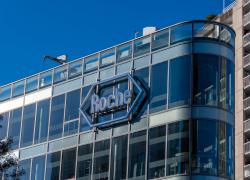
MacroGenics muddies its key catalyst
Tamarack data are a 2024 catalyst, so why has MacroGenics brought forward a follow-on molecule?
Tamarack data are a 2024 catalyst, so why has MacroGenics brought forward a follow-on molecule?

After trying to enthuse the markets about its major 2024 catalyst – data from the Tamarack study of vobramitamab duocarmazine are expected at this year’s ASCO – MacroGenics has now managed to sow confusion. Last week's move to highlight another ADC with the same target as vobra-duo sent the group’s stock down 15%.
Both vobra-duo and the new project, MGC026, hit B7-H3 using the same MAb, but the difference lies in their payloads – a DNA alkylating agent and topoisomerase 1 inhibitor respectively – and linkers. Investors, who have spent the past six months bidding MacroGenics stock up threefold, will now be wondering whether the company is hedging its bets with a follow-on project because vobra-duo is underwhelming.
That’s not how MacroGenics has trailed the upcoming ASCO data, from vobra-duo’s phase 2 Tamarack study in post-Xtandi/Zytiga metastatic castration-resistant prostate cancer patients, some of whom might also have received chemo. Rather, the company has expanded this trial, and set guidelines as to what investors should look for when data are presented.
Read-across?
However, matters weren’t helped by a separate but similar-looking move: MacroGenics revealed on Friday that it was also advancing a second follow-on topo1-based ADC, the anti-Adam9 project MGC028.
This is being done because its more advanced shot at the Adam9 antigen, izeltabart tapatansine (IMGC936), earlier licensed to ImmunoGen, has been discontinued, with no further work undertaken by either MacroGenics or ImmunoGen’s new owner, AbbVie. Clearly there’s no suggestion that vobra-duo was about to suffer a similar fate, but the optics of switching projects in the Adam9 space aren’t particularly helpful.
Instead, MacroGenics spent much of Thursday's fourth-quarter update playing up Tamarack, which it said underwent a protocol modification, and ended enrolment months ahead of schedule after recruiting 177 versus a planned 100 patients. In January the trial passed independent monitoring committee review, with a recommendation to continue, and the data submitted to ASCO comprise safety only.
The actual ASCO presentation will have more mature data, but the full radiographic PFS primary endpoint won’t be revealed until “a conference during the second half of 2024”. MacroGenics said a 40-60% PSA50 response rate, ORR of at least 25% and median radiographic PFS of at least six months would be “meaningful”, adding that Daiichi Sankyo/Merck & Co’s ifinatamab deruxtecan yielded 5.3 months of rPFS.
BTIG analysts expect higher vobra-duo efficacy in chemo-naive versus pretreated patients. Docetaxel monotherapy has shown a PSA50 of 24% and median rPFS of 8.3 months (in the Preside study), while in the post-chemo setting Jevtana gave PSA50 of 36% and median rPFS of 8.0 months (Card trial).
Safety
That said, it’s safety that remains a focus in the first instance. The whole point of Tamarack was to investigate lower vobra-duo dosing (2mg/kg or 2.7mg/kg every four weeks) after two key toxicities were seen at 3mg/kg every three weeks.
Evercore ISI’s Jonathan Miller said on a webinar that the patient discontinuation rate in Tamarack will be the key issue at ASCO. Only if the toxicity problem has been fixed will there be more confidence in the later efficacy readout.
As for the follow-on MGC026, MacroGenics insisted that different chemotherapies worked differently in different tumours, implying a future for both this and vobra-duo in future treatment. Evercore agreed that bringing forward MGC026 didn’t necessarily imply a lack of confidence in vobra-duo, and there were even hints that the two B7-H3-targeting ADCs could be used in combination.
For now, however, the markets are sceptical, and the situation might continue until Tamarack shows convincing efficacy with manageable safety.
1462













